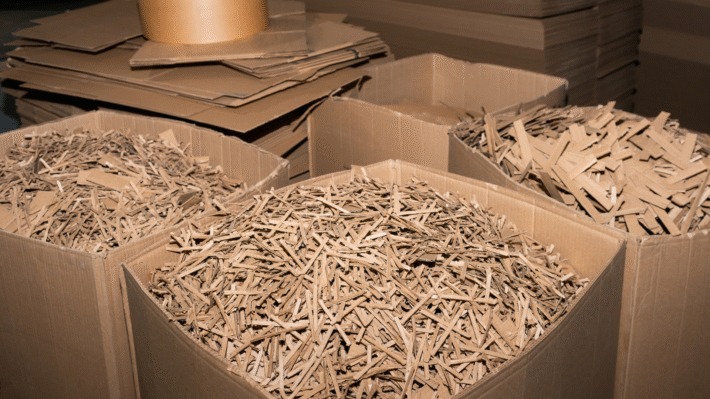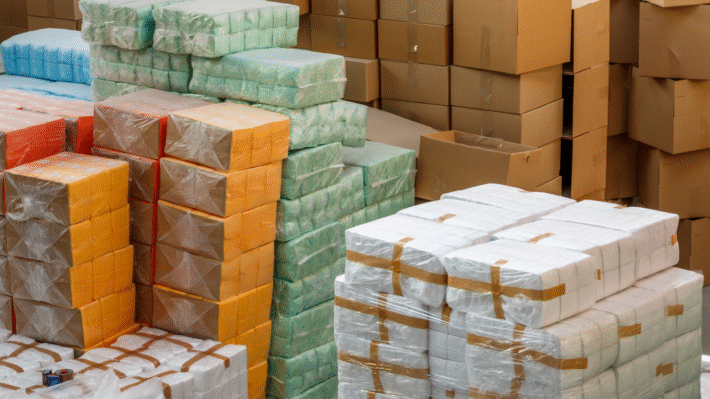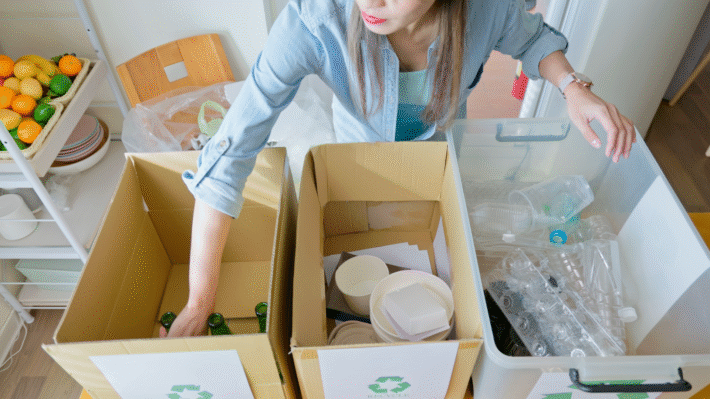Circular Alternatives for a Zero-Waste Kitchenware Supply Chain

Hello everyone! Today, we’re going to dive into an exciting world that’s crucially important for both our day-to-day lives and our planet. We are talking about Creating circularity in the kitchenware supply chain! From the nonstick pan in your kitchen that’s potentially toxic, to the disposable utensils that end up in the landfill, we archly need better options – and that’s where circular alternatives and closed-loop systems come in! Through this journey, we’ll explore how we can reduce waste, conserve resources, and promote sustainability, while enjoying well-cooked meals and an eco-friendly lifestyle. Because whether you’re a cooking enthusiast, or someone who cares about Mother Earth, there’s something in it for everyone! So grab a cup of coffee and let’s get started on this rewarding adventure of transforming the kitchenware we use every day!
Nonstick Cookware Alternatives
Hey there, pals! Let me tell ya – the age of sticky pans and toxic fumes in our kitchens is well and truly done. Say hello to a new era of healthy, sustainable cookware. It’s time we explore some nonstick alternatives that are better for us and our dear ol’ planet.
Innovative Materials for Cookware
Let’s cut the chase and get to know the heavy hitters in this arena.
Ceramic Coatings
First up, ceramic coatings. Now you might be thinking, “Ceramic? Really?”. I can’t blame you. But truth be told, ceramic has come a long way. High-end technology has enabled the production of nonstick cookware that’s hard as nails but smooth as butter, without the harmful toxins that come with traditional nonstick pans. Plus, they can take a high heat and are easy to clean. That’s a slam dunk if you ask me!
Cast Iron and Stainless Steel
Next, we have our trusty old friends, cast iron and stainless steel. These guys have stood the test of time, and for good reason. Cast iron pans are virtually indestructible, can handle all kinds of culinary torture, and when properly seasoned, offer a naturally nonstick surface. Stainless steel, on the other hand, is great when you want a good sear on your steaks. Its uniform heat distribution is something to write home about.
Biological Coatings
Last but not least, an exciting newcomer – biological coatings. Made from natural, sustainable materials, these biodegradable coatings can create nonstick surfaces without all the chemical fuss. It’s a brave new world, isn’t it?
Designing Durable Cookware
Now, the thing with cookware is, a good pan should be a lifelong investment, not a flimsy tool that you toss away after a year of use. So how do we ensure we have durable, long-lasting cookware?
Modular Designs
Enter, modular designs – cookware with replaceable surfaces. Instead of tossing the whole pan when it’s worn out, you simply replace the surface. Imagined it like getting a new tire on your car instead of buying a whole new car. Makes sense, right?
Repairable and Long-lasting
Then, we have cookware that’s repairable and made to be long-lasting. High-quality materials, robust construction, and easy repair options – that’s how you make a pan last a lifetime.
Lifecycle Management for Nonstick Alternatives
It’s not enough to just make a great product, we also need to think about what happens when it’s life comes to an end.
Recycling Processes
That’s where recycling processes come in. High-quality, non-toxic materials can often be recycled into new products, reducing waste and our footprint on the environment.
Biodegradable Options
What if we could make our kitchen tools return to the earth without a trace? Biodegradable options do just that. Made from compostable materials, they degrade naturally when disposed of responsibly.
Take-back Programs
Lastly, some forward-thinking companies offer take-back programs. Bring in your old pan, and they’ll handle the recycling for you, sometimes even giving you a discount on a new purchase. It’s a win-win!
So, folks, that’s it for now. Remember, a healthy kitchen is the first step towards a better you and a better planet. Let’s make it happen!
Disposable Utensil Alternatives
Have you ever thought about how many plastic spoons, forks, and plates you dispose of after a single use? It’s time to get familiar with some better alternatives to these wasteful practices. Let’s delve into the world of disposable utensil alternatives!
Exploring Edible Utensils
Before we chuck out the disposable utensils, why don’t we eat them? Sounds wild, doesn’t it? Well, it’s true!
Rice and Wheat Bran
Crazy genius minds have come up with utensils made of rice and wheat bran that you can eat after your meal! These utensils aren’t just safe to eat; they’re nutritious and don’t affect the taste of your food.
Flavor-infused Options
What’s more, some companies are taking edible utensils up a notch by offering flavor-infused options. Imagine having a biscuit spoon tasting like vanilla, strawberry, or chocolate that you can eat after stirring your coffee. It’s a treat, minus the extra dishes!
Biodegradable and Compostable Solutions
For those who can’t wrap their heads around the edible utensil craze, there are other eco-friendly alternatives to consider.
Using Agricultural Waste
Some companies are turning agricultural waste into disposable utensils. They use a variety of biomass wastes, including wheat, rice, bamboo, and corn stalks, which allows for a wide range of shapes, sizes, and characteristics. Plus, you’re putting waste to good use!
Compostable Alternatives
Compostable alternatives have also earned their stripes in the world of sustainable kitchenware! These utensils are usually made from natural materials like wood or plant starch. After use, they can be composted at home or in industrial facilities, turning waste into valuable nutrients for our soil.
Reusable and Innovative Packaging
If you prefer to stick with the tried and true, don’t fret! Even familiar utensil options can have a green spin.
Collapsible Utensil Sets
Collapsible utensil sets have rocketed in popularity. These compact kits pack flat for easy transport and are perfect for camping trips, picnics, or everyday use. They’re a tiny investment for a lifetime of reuse!
Seed-embedded and Dissolvable Packaging
To top it all off, some manufacturers are introducing seed-embedded packaging. Once you’ve used your utensils, you can plant the package, water it, and watch it grow into herbs, flowers, or vegetables. And for those fearing a garden overrun with plants, there are dissolvable packaging options. Simply dissolve the package in water after use – it’s as simple as that!
There you have it, folks. Disposable utensils don’t have to be harmful to our planet. With these options available, it’s easy to add a dash of sustainability to every meal.
Developing a Circular Supply Chain
Picture your kitchen. Now, envision everything in it – your pots, pans, spatulas, forks – all contributing to a system that doesn’t just take from the earth, but gives back. Sounds amazing, doesn’t it? That’s the power of a circular supply chain. And, how exactly will this planetary superhero come to be? Let’s dive in!
Sustainable Manufacturing Methods
When we talk about sustainability, one of the paramount aspects is the materials we use.
Utilizing Recycled Materials
Did you know that we can extract vital resources from our old, unwanted items? That’s right, folks! By reusing materials, we can breathe life into new kitchenware products, all while saving our pockets and Mother Earth. It’s recycling at its finest. And the best part? You’re part of the process.
Zero-Waste Manufacturing Processes
But wait, there’s more! In our fight against waste, we’ve also optimized our manufacturing processes. By cutting back on energy use and making full use of all raw materials, we’ve managed to trim down the waste we create. Our aim? Absolutely zero waste. A lofty goal? Perhaps, but it’s one we’re willing to strive for.
Efficient Logistics Systems
In the world of supply chains, how we move products matters. But don’t worry, we’ve got that sorted, too!
Reverse Logistics
Just like a boomerang, our products can return to us. When you’re finished with your pots and pans, we’ll take them back and make something new. In return, you get a pat on the back and maybe even a sweet deal on your next purchase.
Return and Incentive Programs
To nudge things along, we’ve embedded incentives for our customers. Want a discount on your next order? Just bring your old stuff back! It’s a win for the planet, a win for our economy, and a big win for your wallet!
New Business Models for Circularity
Jazzing things up, we’ve introduced some snazzy new models for greener kitchenware.
Product-as-a-Service
Have you dreamed of always having the latest, most eco-friendly kitchen tools? Well, now you can! With our subscription services, you’re always up to date, and you can exchange your tools when it’s best for the planet.
Local Manufacturing Hubs
We’re bringing production back home. By using local manufacturing hubs equipped with 3D printers, we can cut back on transportation, reduce greenhouse gas emissions, and create jobs. It’s what we call local solutions for global problems.
Back to your kitchen – looks different now, right? Eyeing your old frying pan, don’t you think it’s time you join us in creating a circular kitchen? It’s the cooking revolution you don’t want to miss!
Engaging with Consumers
We are living in an ever-changing world, folks, and consumers today are smart. They want to know what they’re getting, but not just that. They want to know where it’s from, how it’s made, and what impact it has on the world around them. With this shift in mind, let’s dive into some ways we can engage with our conscious consumers through transparency, education, and a little bit of fun!
Promoting Transparency
In this digital era, we’ve got to keep up with the tech-savvies. And guess what? QR codes are coming to the rescue.
QR Codes for Product Information
Imagine scanning a QR code on your kitchen pan and boom! You know its entire life story – where it was born (i.e., manufactured), what it’s made from, how to best use and care for it, and even where it could go once it’s served its time (recycling options, anyone?). Now that’s what you call trust-building transparency!
Clear Material Labeling
Another key to winning consumer trust and promoting transparency is clear material labeling. No hidden components here! Whether it’s cast iron or ceramic or bio-coatings, it’s all written in a way that even your five-year-old could understand. (Ok, maybe that’s a little ambitious. But you get the point).
Educational Initiatives
Our consumers don’t just want to buy our products; they want to understand them and become better caretakers for them.
DIY Repair Workshops
So we got creative and thought, why not teach them? Enter DIY repair workshops – offering chances for consumers to learn how to repair, maintain, and extend the life of their cookware. Imagine the satisfaction of fixing your favorite pan on your own. That’s empowering!
Online Learning Resources
But we didn’t stop there. For our friends who prefer learning at their own pace, we got online tutorials and resources – everything from basic maintenance tips to professional level care techniques.
Encouraging Participation through Gamification
Learning doesn’t need to be boring, folks. Which is why we have come up with a little tour de force.
Impact Tracking Apps
We’ve cooked up some delightful apps that let consumers track the impacts of their purchases, usage, and recycling practices. It’s like a personal eco-diary on your phone. Go green!
Rewards and Incentives
And guess what? Being eco-friendly comes with its own rewards. Tokens, discounts, early access to new products – it’s a win-win for everyone involved.
So, there we have it, folks. A consumer engagement plan that not only informs and educates but also empowers and rewards. It’s a fun, interactive journey that takes us all a step closer towards creating a more sustainable world.
Collaborative Innovation
Back in the old days, every kitchen had a pile of chipped and burnt pots and pans, “non-stick” labels faded from overuse. And who can forget the towering stack of disposable utensils, slowly threatening to topple over? But times are changing, folks. And with it, our approach to kitchenware. The secret recipe? Collaborative Innovation.
Facilitating Partnerships
Collaborations with Waste Management
If we are to forge a future of sustainability, partnerships are our trusty backbones. We’re not talking about shaking hands with big shot businessmen, friends. Instead, we’re reaching out to the guys who deal with the unglamorous job of sorting through our waste. Yes, you guessed it, collaboration between kitchenware companies and waste management organizations is the wave of the future.
With their vast knowledge and resources, waste management companies are perfectly positioned to reclaim discarded items. In partnership with these folks, companies can create circular supply chains to feed into new product production. This is recycling in action, where old pans contribute to the making of new ones. We are truly giving our old pots a new breath of life!
Engagement with the Food Industry
Stove to table is now more than a buzzword. It’s a movement. Co-operating with the food industry, kitchens are no longer disconnected from the food they cook. Farm-to-table restaurants, for instance, are now capitalizing on the circular economy by using sustainable kitchen tools. This benefits both the health industry, the environment, and, honestly, just makes the food taste that bit sweeter.
Fostering Creative Design
Open-source and Crowdsourced Ideas
Gone are the days of elusive product designs. Today, we’re looking towards transparency with open-source and crowd-sourced ideas. This means sharing design ideas freely, or even involving customers in suggesting new features. After all, who knows better about what a pan or a utensil needs than the person using it every day?
We’re seeing more people share creative suggestions to improve product life cycle, functionality, and aesthetics. This blends innovation with customer satisfaction, and, well, who can complain about that?
Design Inspirations from Nature
Did you know that some of the best design solutions are found in the world around us? It’s called biomimicry, basically copying the ideas from nature. We’re flipping the switch from conventional, resource-intensive models, to ones inspired by nature’s efficient processes.
Take for example, leaf patterns inspiring efficient spacing in a spoon, or the texture of a shell providing inspiration for non-stick surfaces. It’s quite fascinating, folks, and it’s paving the way for sustainable alternatives with a natural touch.
Research and Development Contributions
Creating New, Sustainable Materials
Nowadays, research and development efforts are focused on something crazy special, creating new, sustainable materials for kitchenware. Imagine utensils made from bio-plastics derived from food waste or pan coatings created from plant-derived materials. The future is here, ladies and gentlemen!
Pioneering Sustainable Solutions
Through innovative research and testing, environmentally harmful manufacturing can kiss our grits. Intensive energy use and toxic byproducts are being replaced by sustainable solutions. New processes like 3D printing utensils from recyclable material are just the tip of the iceberg.
The kitchen belongs to all of us. So, whether you’re a dishwasher or a master chef, join us in this movement to create a circular kitchenware system. We need you, yes you, to collaborate, innovate, and contribute to significantly reducing kitchen clutter and waste. Together, we’ll cook up a sustainable future. Let’s keep the stove hot, and the Earth cool!



